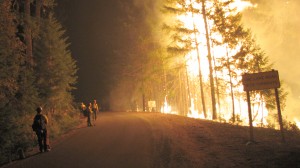Burning to learn

In central California’s Yosemite National Park, it doesn’t take much to set the forest on fire. A discarded cigarette. A match. Or, as is often the case, a bolt of lightning. On July 31, 2011, thunder boomed as a severe storm pelted the park. The lightning struck trees, igniting several fires. Firefighters with the National Park Service quickly extinguished three fires. But they let a fourth burn on.
They thought it might actually do more good than harm.
That fire began burning through a rugged section of the mixed conifer woods next to the Badger Pass Ski Area. It scorched the bark on big trees. Smaller trees died. A thick layer of fallen, dead and dry plant debris, called litter, further fueled the flames. Within 12 days, this Avalanche Fire — named for nearby Avalanche Creek — had spread through a sprawling swath of forest larger than 1,000 football fields.
Letting the Avalanche Fire burn was no accident, explains Jun Kinoshita. He’s an archaeologist and a firefighter with the National Park Service (NPS). He says that over time, dead vegetation — including leaves, branches and needles — had piled up on the forest floor. That litter serves as extra fuel and can keep a fire burning.
Read more about fire science here.
Image credit: Bureau of Land Management